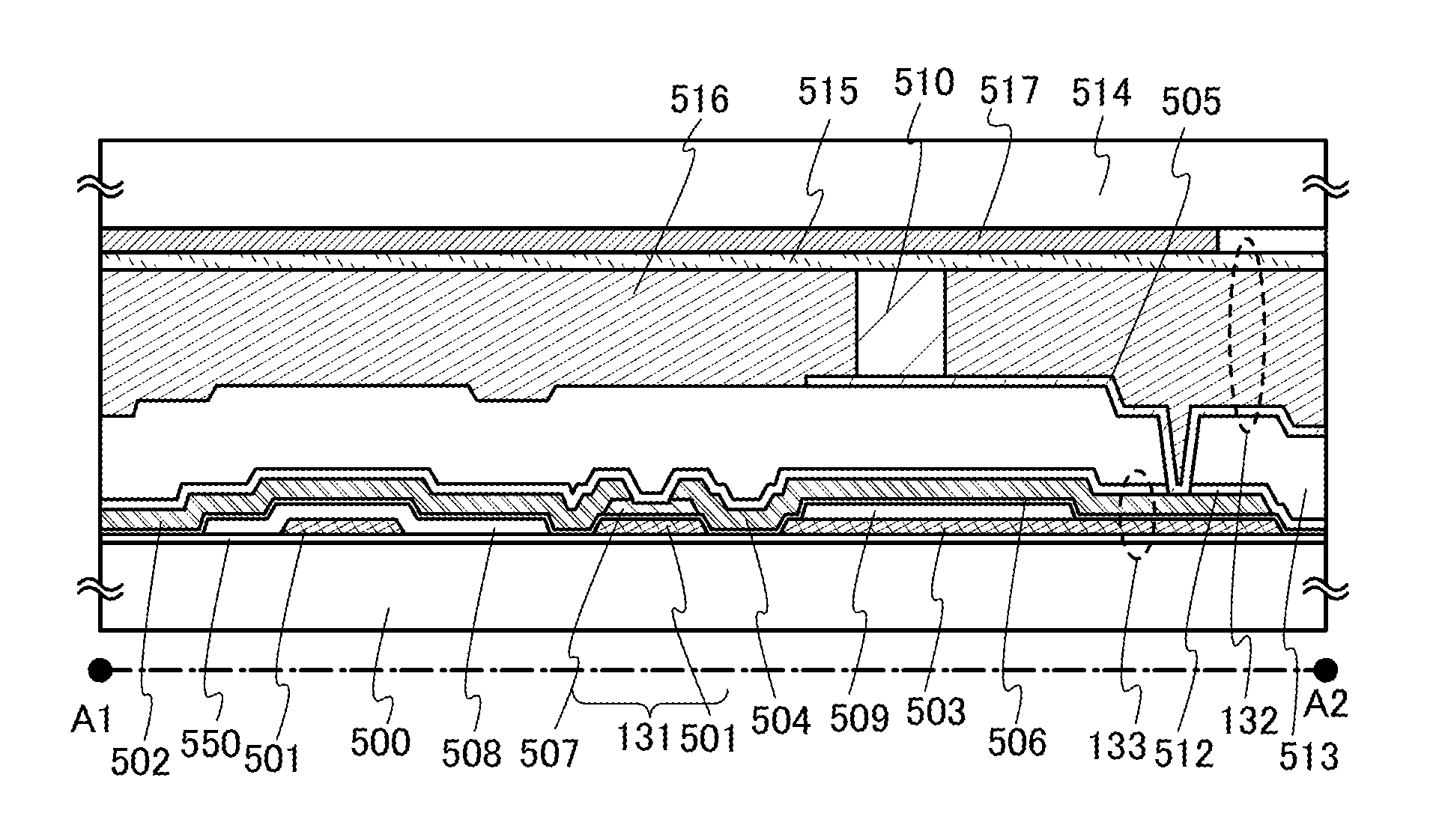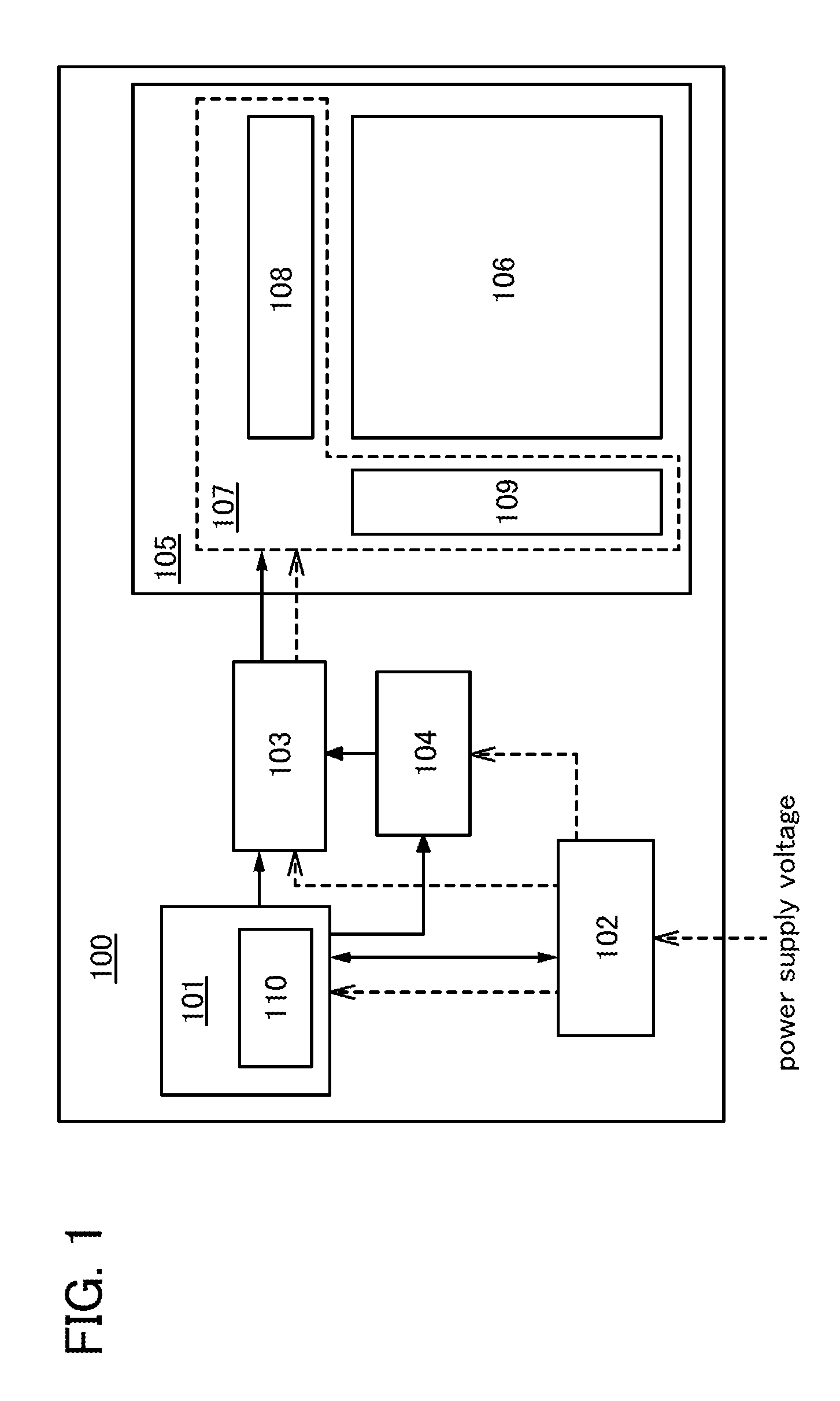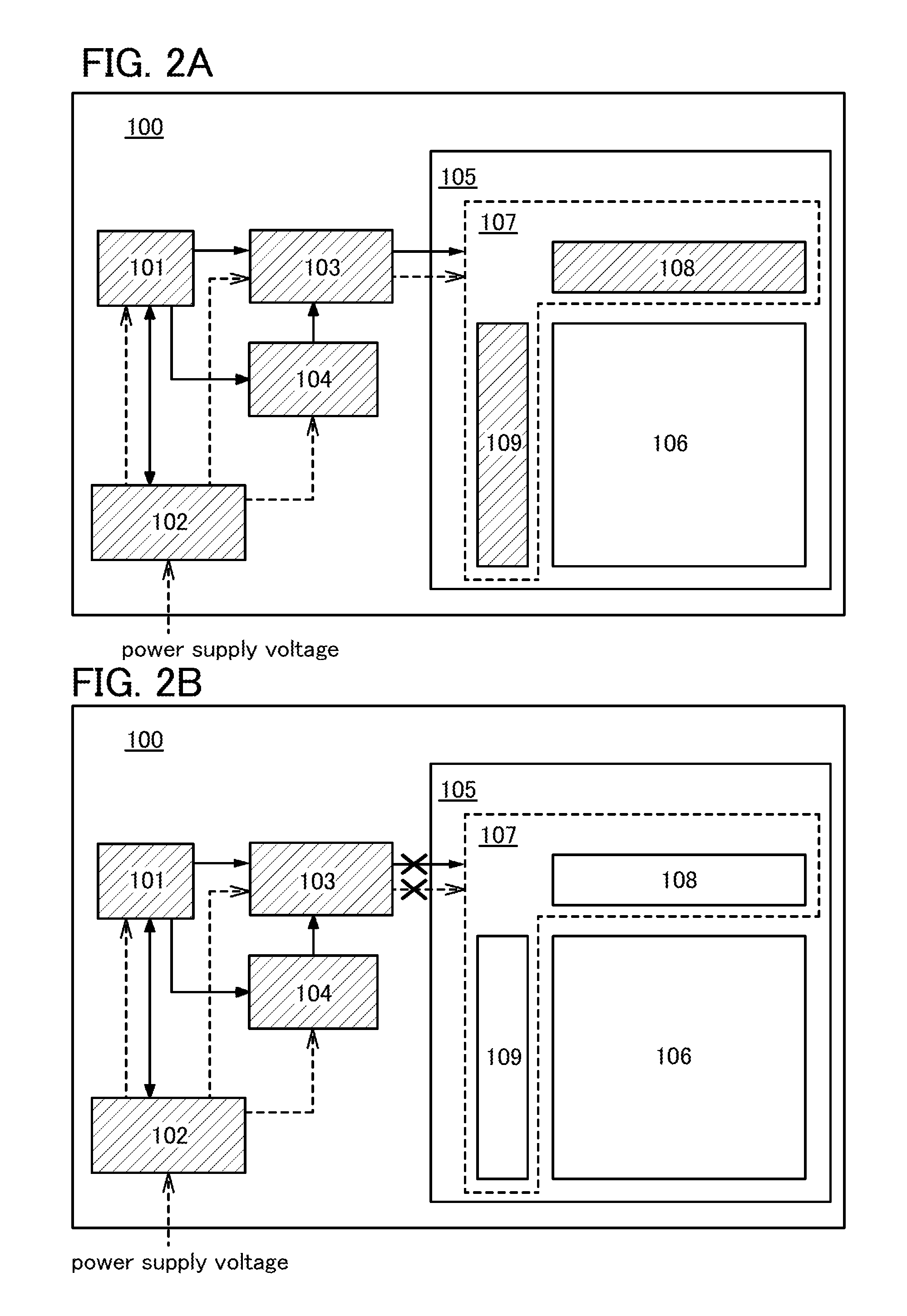Semiconductor display device
a semiconductor display device and active matrix technology, applied in semiconductor devices, electrical appliances, instruments, etc., can solve the problems of short continuous operation time, achieve the effect of low power consumption, high power consumption of the semiconductor display device, and consume less power
- Summary
- Abstract
- Description
- Claims
- Application Information
AI Technical Summary
Benefits of technology
Problems solved by technology
Method used
Image
Examples
embodiment 1
[0033]FIG. 1 illustrates a block diagram of a semiconductor display device according to one embodiment of the present invention. Note that in this specification, in a block diagram, circuits are classified by their functions and independent blocks are illustrated. However, it is difficult to classify actual circuits by their functions completely and, in some cases, one circuit has a plurality of functions.
[0034]As illustrated in FIG. 1, a semiconductor display device 100 according to one embodiment of the present invention includes a CPU 101, a power supply controller 102, a panel controller 103, an image memory 104, and a panel 105. Further, the panel 105 includes a pixel portion 106 having a display element in each pixel and a driver circuit 107 for controlling the operation of the pixel portion 106. The driver circuit 107 includes a signal line driver circuit 108, a scan line driver circuit 109, and the like.
[0035]The CPU 101 has a function of collectively controlling the operati...
embodiment 2
[0204]In this embodiment, an example of a shift register applicable to the scan line driver circuit 109 and the signal line driver circuit 108 of the semiconductor display device 100 described in the above embodiment is described.
[0205]FIGS. 11A and 11B illustrate a structure example of the shift register in this embodiment.
[0206]The shift register in FIG. 11A is formed using P sequential logic units 10 (P is a natural number of 3 or more). In FIG. 11A, the P sequential logic units 10 are illustrated as sequential logic units FF_1 to FF_P.
[0207]A start signal ST and a reset signal Res are input to each of the sequential logic units FF_1 to FF_P.
[0208]Further, a clock signal CK1, a clock signal CK2, and a clock signal CK3 are input to each of the sequential logic units FF_1 to FF_P. As the clock signal CK1, the clock signal CK2, and the clock signal CK3, for example, any three of a first clock signal (also referred to as CLK1), a second clock signal (also referred to as CLK2), a thir...
embodiment 3
[0235]In this embodiment, a specific embodiment of a CPU is described. FIG. 13 is a block diagram illustrating a structure example of a CPU.
[0236]A CPU 600 includes a controller 601, an arithmetic logic unit (ALU) 602 corresponding to an arithmetic unit, a data cache 603, an instruction cache 604, a program counter 605, an instruction register 606, a main storage device 607, and a register file 608.
[0237]The controller 601 has a function of decoding and executing an instruction input. The ALU 602 has a function of performing a variety of arithmetic processing such as four arithmetic operations and logic operations. The data cache 603 is a buffer storage device that temporarily stores frequently used data. The instruction cache 604 is a buffer storage device that temporarily stores a frequently used instruction of instructions (programs) sent to the controller 601. The program counter 605 is a register that stores an address of an instruction to be executed next. The instruction regi...
PUM
 Login to View More
Login to View More Abstract
Description
Claims
Application Information
 Login to View More
Login to View More - R&D
- Intellectual Property
- Life Sciences
- Materials
- Tech Scout
- Unparalleled Data Quality
- Higher Quality Content
- 60% Fewer Hallucinations
Browse by: Latest US Patents, China's latest patents, Technical Efficacy Thesaurus, Application Domain, Technology Topic, Popular Technical Reports.
© 2025 PatSnap. All rights reserved.Legal|Privacy policy|Modern Slavery Act Transparency Statement|Sitemap|About US| Contact US: help@patsnap.com



